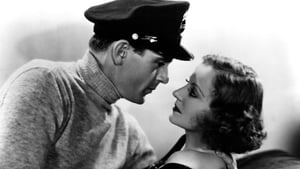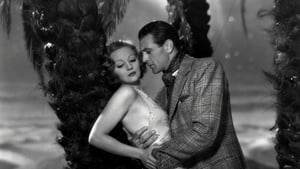Contact: [email protected]
Video Sources 0 Views
- The Devil and the Deep


Synopsis
Table of Contents
ToggleReview: The Devil and the Deep (1932) – A Riveting Tale of Love and Obsession

Introduction
“The Devil and the Deep” (1932) immerses audiences in a world of forbidden desires and dark secrets, exploring the depths of human emotion with mesmerizing intensity. In this article, we’ll delve into the significance of this early classic film, examining its impact on audiences and its enduring legacy in the realm of romantic drama.
Check The Full Colorized Movies List
Check Our Colorized Movies Trailer Channel
Understanding The Devil and the Deep 1932: Director, Cast, and Genre
Directed by the visionary Marion Gering, “The Devil and the Deep” (1932) showcases his ability to craft compelling narratives that resonate with viewers. The film boasts a stellar cast, including Charles Laughton, Tallulah Bankhead, and Gary Cooper, whose performances breathe life into their characters with remarkable depth and nuance. Blending elements of romance, suspense, and psychological drama, “The Devil and the Deep” (1932) captivates audiences with its spellbinding tale of love and obsession.
Exploring the World of The Devil and the Deep 1932: Plot and Characters
At its core, “The Devil and the Deep” (1932) follows the tumultuous relationship between a troubled naval officer, played by Charles Laughton, and his devoted wife, portrayed by Tallulah Bankhead. As their idyllic existence is shattered by the arrival of a mysterious stranger, portrayed by Gary Cooper, they find themselves drawn into a web of deceit and betrayal that threatens to consume them. Against the backdrop of a sun-drenched Mediterranean port, they must confront their deepest fears and desires in a desperate bid for redemption.
The Art of Film Colorization
Film colorization serves as a transformative tool that enhances the visual experience of classic movies, breathing new life into timeless stories and captivating audiences with vibrant hues. By digitally adding color to black and white films, colorization allows viewers to immerse themselves in the rich tapestry of cinematic worlds, exploring every nuance and detail with fresh eyes and renewed appreciation.
Early Colored Films: A Brief History
The history of colored films traces its roots back to the early days of cinema, with filmmakers experimenting with various techniques to add color to their creations. From hand-tinted frames to early Technicolor processes, the evolution of colored film has been marked by innovation and ingenuity, paving the way for the development of modern colorization techniques that continue to captivate audiences to this day.
The Devil and the Deep 1932 and Its Early Colored Version
The decision to release “The Devil and the Deep” (1932) in a colorized format was met with both excitement and trepidation. While some welcomed the opportunity to experience the film in vibrant color, others expressed concerns about the potential impact on its visual aesthetic. Nevertheless, the early colored version of “The Devil and the Deep” (1932) offers viewers a fresh perspective on the timeless tale of love and obsession, enhancing its emotional resonance and captivating audiences with its luminous beauty.
The Debate Over Film Colorization
The debate over film colorization continues to divide audiences and critics alike, with proponents praising its ability to breathe new life into classic movies and introduce them to a new generation of viewers, while detractors argue that it compromises the artistic integrity of the original work and diminishes its historical significance. As the debate rages on, filmmakers and audiences alike are left to ponder the merits and drawbacks of colorization in the ever-evolving landscape of cinema.
Examining The Devil and the Deep 1932 as an Early Colored Film
As with any colorized classic, the impact of colorization on “The Devil and the Deep” (1932) is a matter of personal interpretation. Some may argue that it enhances the film’s visual appeal and immerses viewers in its world, while others may feel that it detracts from the stark beauty of the original black and white version. Regardless of one’s stance on the issue, there’s no denying the enduring power of “The Devil and the Deep” (1932) as a timeless romantic drama that continues to capture the hearts of audiences around the world.
Influence and Legacy: The Devil and the Deep 1932’s Impact on Cinema
“The Devil and the Deep” (1932) has left an indelible mark on the world of cinema, inspiring countless filmmakers and captivating audiences with its timeless tale of love and obsession. From its unforgettable performances to its sweeping cinematography, the film continues to resonate with viewers of all ages, reaffirming its status as a beloved classic of the romantic drama genre.
Director’s Cinematic Legacy: Beyond The Devil and the Deep 1932
Marion Gering’s influence extends far beyond “The Devil and the Deep” (1932), with a diverse body of work that continues to captivate audiences around the globe. From “Hotel Imperial” to “Midnight,” Gering’s films are celebrated for their wit, charm, and sophistication, solidifying his legacy as one of the preeminent directors of Hollywood’s Golden Age. Through his groundbreaking work, Gering has left an indelible imprint on the world of cinema, inspiring generations of filmmakers to follow in his footsteps.
Themes Explored in The Devil and the Deep 1932
“The Devil and the Deep” (1932) explores a myriad of themes, from the transformative power of love to the destructive nature of obsession. Through its richly drawn characters and atmospheric storytelling, the film invites viewers to ponder the complexities of human relationships and the lengths to which people will go in pursuit of their desires. As audiences immerse themselves in the world of “The Devil and the Deep” (1932), they are reminded of the timeless truths that bind us together and the enduring power of love to conquer even the darkest of temptations.
Reception and Controversy Surrounding The Devil and the Deep 1932
Upon its release, “The Devil and the Deep” (1932) received widespread critical acclaim, with many praising its haunting performances, atmospheric cinematography, and spellbinding narrative. However, the decision to release the film in a colorized format sparked debate among purists, reigniting the age-old discussion surrounding film preservation and artistic integrity. Despite the controversy, “The Devil and the Deep” (1932) remains a beloved classic that continues to resonate with audiences of all ages, reaffirming its status as a timeless masterpiece of the romantic drama genre.
Where to Watch The Devil and the Deep 1932 Online
For those eager to experience the timeless magic of “The Devil and the Deep” (1932), the film is readily available on popular streaming platforms such as Netflix, Amazon Prime, and Hulu. Whether you choose to watch it in its original black and white format or the early colored version, “The Devil and the Deep” (1932) promises to transport you to a world of love, obsession, and redemption, where the line between desire and despair blurs and the human heart is laid bare.
FAQs About The Devil and the Deep 1932
Q: Is “The Devil and the Deep” (1932) based on a true story? A: No, “The Devil and the Deep” (1932) is a fictional tale crafted by screenwriter Harry Hervey, who drew inspiration from his own experiences and observations of human nature.
Q: Who are the main actors in “The Devil and the Deep” (1932)? A: “The Devil and the Deep” (1932) features an ensemble cast led by the talented Charles Laughton, Tallulah Bankhead, and Gary Cooper, whose performances bring their characters to life with remarkable depth and nuance.
Q: What awards did “The Devil and the Deep” (1932) win? A: While “The Devil and the Deep” (1932) did not win any major awards, it received critical acclaim for its haunting performances, atmospheric cinematography, and spellbinding narrative.
Q: Why was “The Devil and the Deep” (1932) released in a colorized format? A: The decision to release “The Devil and the Deep” (1932) in color was made to introduce the film to a new generation of viewers and enhance its visual appeal for modern audiences. While the choice to colorize the film sparked debate among purists, it ultimately allowed “The Devil and the Deep” (1932) to reach a wider audience and ensure its continued relevance in the annals of cinematic history.
Conclusion
As we journey through the murky depths of desire and despair in “The Devil and the Deep” (1932), let us remember the enduring power of love to conquer even the darkest of temptations. In a world filled with uncertainty and longing, the film serves as a poignant reminder of the complexities of the human heart and the fragile nature of the human spirit.
So, whether you’re a seasoned cinephile or a casual moviegoer, take a moment to revisit “The Devil and the Deep” (1932) and experience the timeless magic of love, obsession, and redemption. For in the haunting tale of desire and despair that unfolds on screen, you’ll find a treasure trove of wisdom and wonder that will stay with you long after the credits roll.















